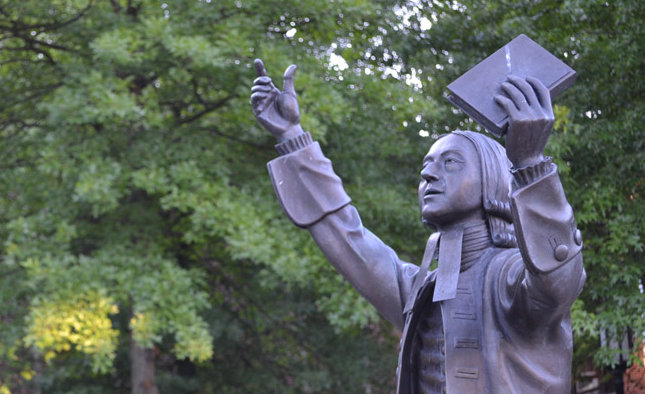Increasing number of clergy are receiving their seminary degree from a United Methodist-affiliated institution.
Almost two-thirds of the deacon and elder ordinands for The United Methodist Church in 2015 received their seminary degree from a United Methodist-affiliated institution. This represents the highest concentration of ordinands from UM institutions in recent years, according to a report by the General Board of Higher Education and Ministry (GBHEM).
Of the 438 total ordinands in the United States, 273 earned degrees from UM institutions, which is a four percent increase over the previous year, and represents a continued upward trend since 2009, when just over half of the ordinands earned degrees from UM institutions.
“We are pleased that the percentage of ordinands who receive their training from UM schools is rising,” said Rev. Dr. Kim Cape, general secretary at GBHEM. “Their United Methodist identity is strengthened by the background, education and training from United Methodist seminaries.”
“These study results are a testament to the resources and support being given at an annual conference level and at a local church level. A denominational emphasis on young clergy will be a factor in continuing this trend in a positive direction,” Cape adds.
Each year, all UMC annual conferences complete a “Business of the Annual Conference” report. This report includes the names of the individuals ordained as a deacon or elder in the conferences that year, as well as the seminary that awarded the degree for each person. GBHEM has been collecting this information over the past several years to better understand where ordinands in The UMC are receiving their seminary education.
Asbury Theological Seminary remained the most predominant institution among ordinands, with 57 individuals, or 13 percent, in 2015, the report says. Closely following Asbury was Duke Divinity School, the single most predominant UM-affiliated institution, with 52 individuals, or 12 percent, of the 2015 ordinands.
Candler School of Theology was the second most predominant UM institution with 38 individuals, or 9 percent, of 2015 ordinands. Wesley Theological Seminary, Perkins School of Theology, and Garrett-Evangelical Theological Seminary rounded out the top five UM institutions, each with around 6 percent of the 2015 ordinands.
A total of 108 ordinands, or 25 percent, received their degrees from other institutions besides Asbury and the United Methodist schools. The two among the others with the greatest number were Hood Theological Seminary with 11 graduates, and Vanderbilt Divinity School with 9.
“At GBHEM, we regularly receive feedback from Boards of Ordained Ministry that their strongest candidates tend to be graduates of the United Methodist seminaries,” said Rev. Myron Wingfield, associate general secretary, Division of Ordained Ministry at GBHEM. “If that is the case, it is even more encouraging to see the continued uptick in ordinands emerging from our 13 schools of theology.”
“UM-affiliated institutions make many different contributions to the mission of The United Methodist Church. The report only examines one type of contribution and does not intend to suggest the value of some institutions over others based on a single metric,” said Dr. Mark McCormack, director of Research and Evaluation at GBHEM.
“It’s good to see positive changes from year-to-year, as with the increase in percentage from 2014 to 2015, but it’s even more encouraging and compelling to see a clearly discernible upward trend over a longer period of time,” McCormack said. “Being able to see this upward movement over a period of seven years gives us a greater degree of confidence in saying there’s something happening here.”
To obtain the full GBHEM report, click here.
Last Updated on May 31, 2016

